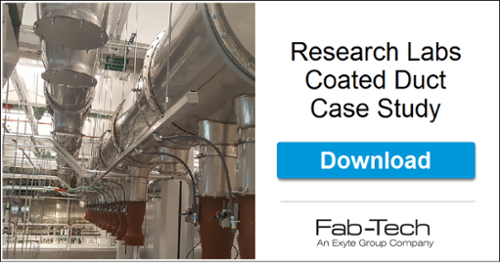OSHA AND Lab Safety Standard 29 CFR 1910.1450
/Research%20labs%20and%20lab%20safety%20measures.png?width=300&name=Research%20labs%20and%20lab%20safety%20measures.png)
Research laboratories are vital to the advancement of technology in many industries including semiconductor, pharmaceutical, chemical, fiber optics, and nanotechnology, to name a few.
In the United States alone, more than a half a million people work in laboratory settings and are faced with the potential dangers that come with this line of employment.
"Section 5(a)(1) of the Occupational Safety and Health Act of 1970 (OSH Act), the General Duty Clause, requires that employers shall furnish employment and a place of employment which is free from recognized hazards that are causing or likely to cause death or serious physical harm to employees." (1)
This means that "even if an OSHA standard has not been promulgated that deals with a specific hazard or hazardous operation, protection of the workers from all hazards or hazardous operations may be enforceable under section 5(a)(1) of the OSH Act.” (1)
/Corrosive%20chemicals%20and%20lab%20safety.png?width=245&name=Corrosive%20chemicals%20and%20lab%20safety.png) From this original OSH Act, a multitude of standards for workplace protection have evolved; including that of lab safety. One such standard is the Occupational Exposure to Hazardous Chemicals in Laboratories standard (29 CFR 1910.1450), also known as the Laboratory Standard, for the protection of research lab employees.
From this original OSH Act, a multitude of standards for workplace protection have evolved; including that of lab safety. One such standard is the Occupational Exposure to Hazardous Chemicals in Laboratories standard (29 CFR 1910.1450), also known as the Laboratory Standard, for the protection of research lab employees.
This standard requires laboratory work spaces to designate procedures as well as job positions to ensure lab safety. In short, the standard requires employers to establish a Chemical Hygiene Officer who develops and maintains a Chemical Hygiene Plan.
This plan must cover employee training for laboratory equipment, chemical use, chemical exposure, medical treatment, safety equipment training, special hazard precautions, and beyond. The Chemical Hygiene Officer is responsible for emergency procedures in case of harmful events and must maintain this plan and update as required to make sure it is considered a best practice for all possible outcomes.
With that in mind, when it comes to hazardous fume emergencies and assessing lab safety, it is vital to weigh all safety considerations on both sides of the chemical fume hood.
Fab-Tech's PSP® product line was designed to specifically protect workplace environments that incorporate hazardous chemicals into their operations. PSP® fume exhaust duct is engineered to safely contain harmful compounds and hazardous vapors that pass through laboratory chemical fume hoods and cabinet-vents.
/Suny%20CNSE%20Permashield%20Pipe%20Install.png?width=564&height=383&name=Suny%20CNSE%20Permashield%20Pipe%20Install.png)
PSP's® proprietary fluoropolymer coating, which is applied to the interior surface of the stainless steel exhaust duct, has been researched and tested against a spectrum of corrosive acids, bases, and solvents that may be used in a variety of laboratory settings worldwide.
This is just one among many reasons that company owners and laboratory design firms specify PermaShield for their process exhaust. They get peace-of-mind knowing that PSP® fume exhaust duct contributes to a highly functioning work environment that is safe for all employees, and that it assists in compliance with the General Duty Clause (section 5(a)(1) of the OSH Act), and lab safety standard 29 CFR 1910.1450.
For this and more information, please feel free to download our:
OR
Read More About PermaShield Fluoropolymer Coated Fume Exhaust Duct Here
